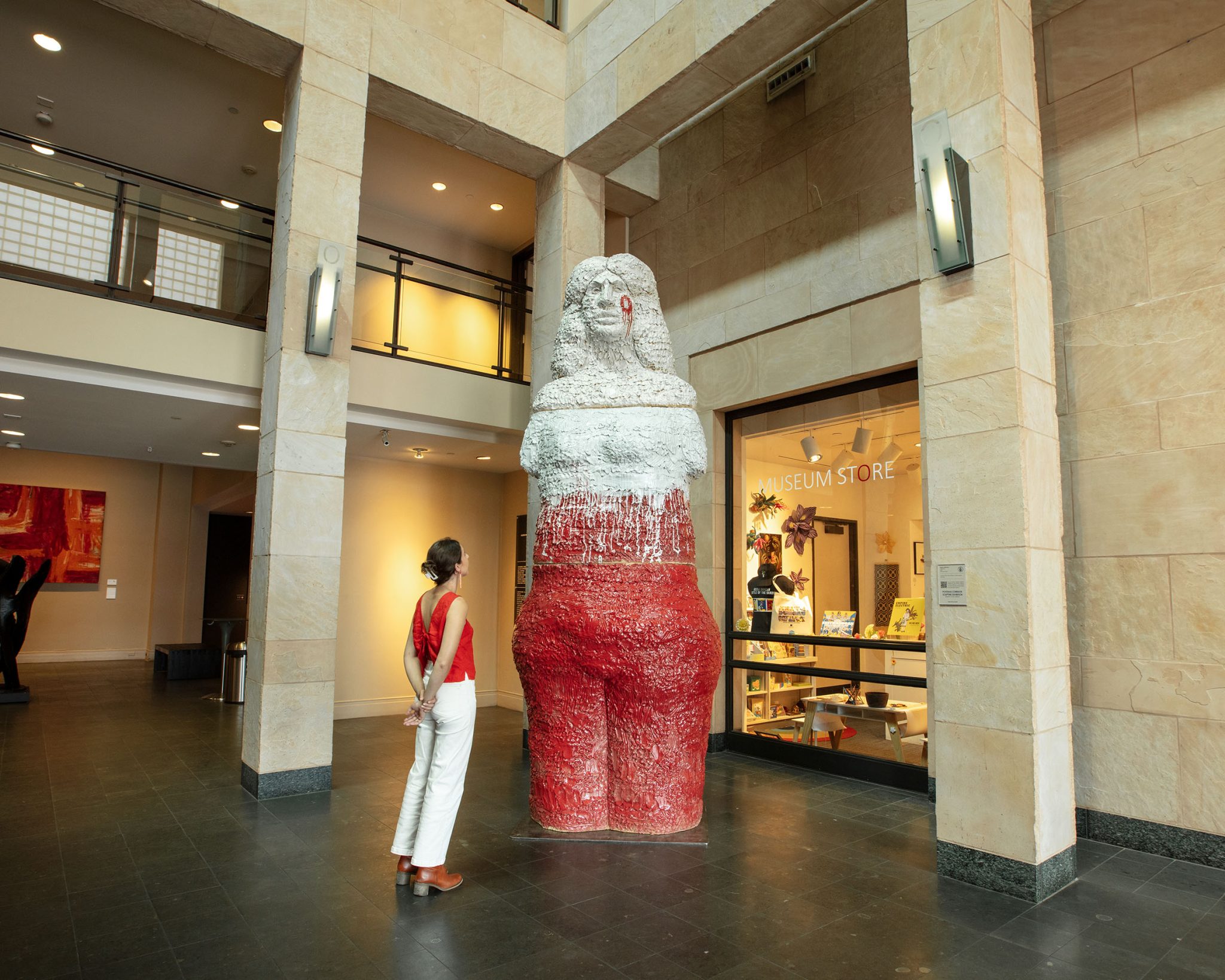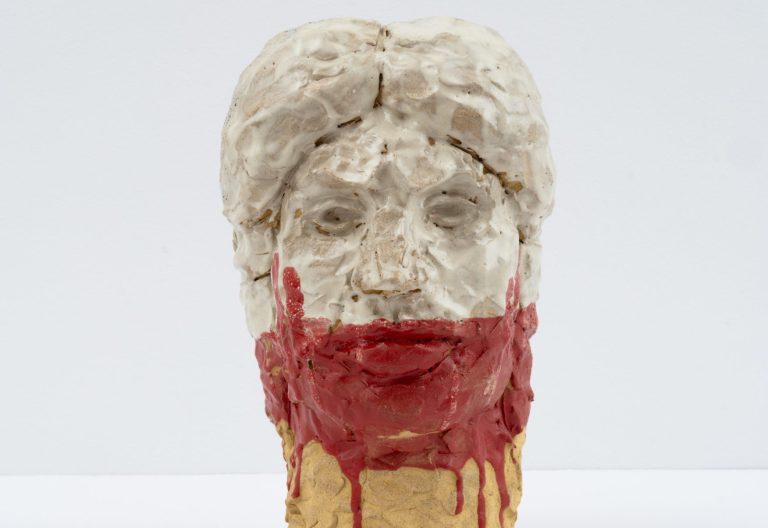Ogden Museum of Southern Art
925 Camp St
New Orleans, LA 70130
504.539.9600 | HOURS
925 Camp St
New Orleans, LA 70130
504.539.9600 | HOURS

Raven Halfmoon, Flagbearer, 2022, Stoneware, glaze, 153 x 59 x 48 inches, Courtesy of the artist and Ross + Kramer Gallery, New York
Raven Halfmoon: Flags of Our Mothers features new and recent works made over the last five years. Commissioned by The Aldrich and Bemis Center, the exhibition debuts Halfmoon’s largest works to date, including Flagbearer, a three-part stacked ceramic sculpture standing over twelve-feet tall.
Halfmoon’s practice ranges from torso-scaled to colossal-sized glazed stoneware sculptures. Several of her recent works soar up to nine-feet high and weigh over a thousand pounds. Their enormous scale and visual power oppose existing stereotypes and biases, creating new monuments that honor the artist’s Caddo ancestors and traditions, including her elders who taught her ceramic techniques when she was a teenager.
Halfmoon’s inspirations orbit centuries—from ancient Indigenous pottery, specifically Caddo pottery traditions, to the colossal Olmec stone heads in Mexico, the Moai statues on Easter Island and the major earth mounds constructed by the artist’s ancestors for a variety of purposes, including ceremonial. Fusing Caddo pottery traditions, a history of making mostly done by women, with populist gestures—often tagging her work (a reference also to Caddo tattooing and ancient pottery motifs), her works reference stories of the Caddo Nation, specifically her feminist lineage and the power of its complexities.
Halfmoon works mainly in portraiture, building each work by hand using the coil method. Her surfaces are expressive and show deep finger impressions and dramatic dripping glazes—a physicality that presences her as both maker and matter. Her palette is specific and matches both the clay bodies she selects and the glazes she fires with: reds, after the Oklahoma soil and the blood of murdered Indigenous women; blacks, which reference the natural clay native to the Red River; and buff creams. Sometimes she stacks and repeats imagery, creating totemic forms that represent herself and her maternal ancestry while also referencing the multiplicities that exist inside all of us.
The title of the exhibition, Flags of Our Mothers, is a tribute to the matriarchs in her life and all the Indigenous women, who over many centuries have created and endured, keeping their stories and traditions present, active and alive.
Support Raven Halfmoon: Flags of Our MothersRaven Halfmoon: Flags of Our Mothers is organized by The Aldrich Contemporary Art Museum and Bemis Center for Contemporary Arts. The exhibition is curated by Amy Smith-Stewart, Diana Bowes Chief Curator at The Aldrich Contemporary Art Museum and Rachel Adams, Chief Curator and Director of Programs at Bemis Center for Contemporary Arts.


Raven Halfmoon, Sunsets in the West, 2023, Glazed Ceramic, Courtesy of the Artist, Kouri+Corraro Gallery

Raven Halfmoon’s work can also be found on The Poydras Sculpture Exhibition Presented by The Helis Foundation. Her sculpture, Sunsets in the West, reflects the colors and concepts of Western life through an Indigenous experience. The vibrant colors of the sunsets in Halfmoon’s home state of Oklahoma painted a luminous backdrop for her life there. Oklahoma has long been known as the place of “Cowboys and Indians,” and she informs that narrative with her experiences. She has also spent significant amounts of time in Montana and California building ceramic pieces that were influenced by her understanding and portrayal of the West.
Located a few blocks from Ogden Museum of Southern Art, The Poydras Corridor Sculpture Exhibition Presented by The Helis Foundation is the South’s leading rotating public sculpture exhibition located in the heart of downtown New Orleans, spanning Poydras Street between Convention Center Boulevard and North Galvez Street.
With 13 installations currently on view, PCSE, in collaboration with the Ogden Museum of Southern Art and the City of New Orleans Department of Parks and Parkways, reinforces New Orleans’ status as a leading international destination for the visual arts.
Learn more about what's on view on the PCSE
Carlos Carmona & David Pine
Beatrice Cera Forlano
Sandy & Wouter de Bie
Catherine Makk
Sharonda Williams
Support Raven Halfmoon: Flags of Our Mothers